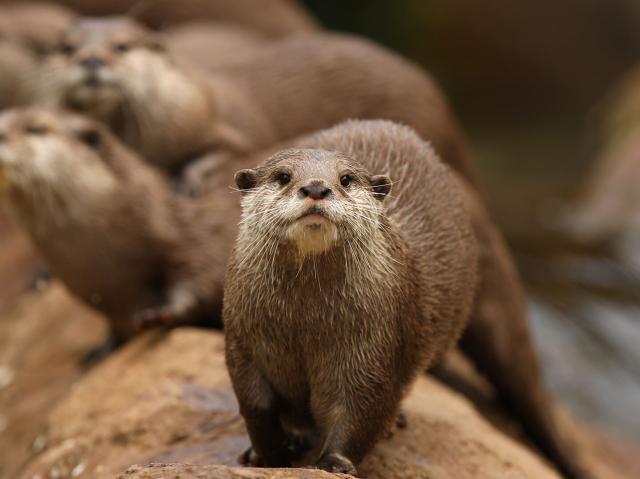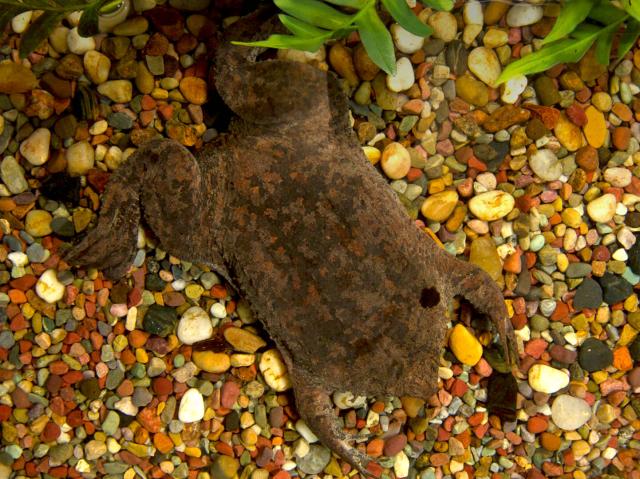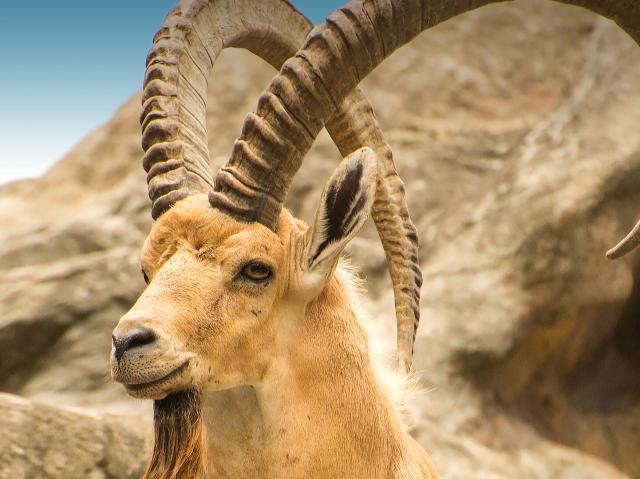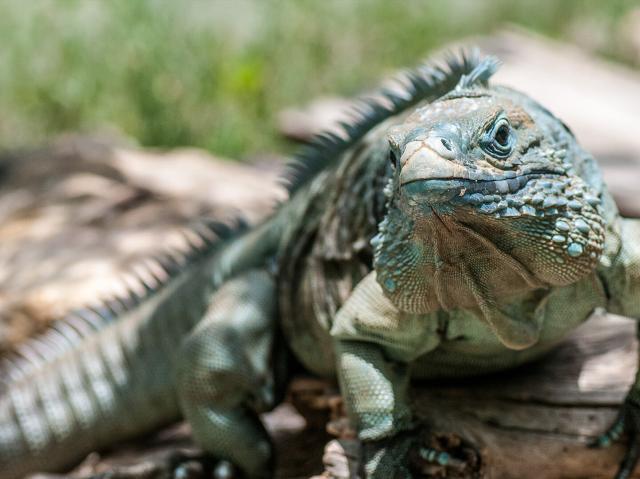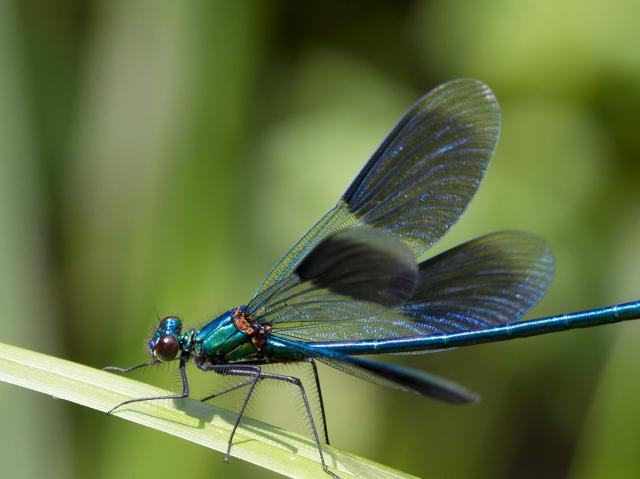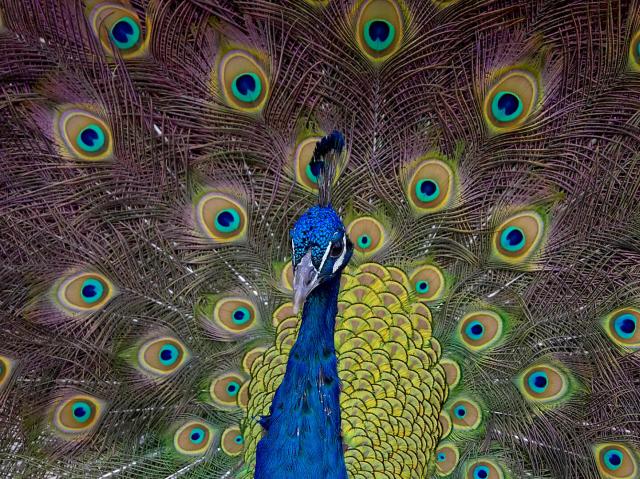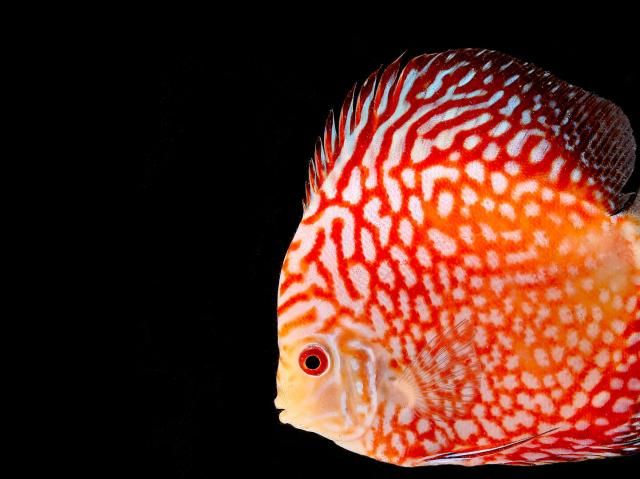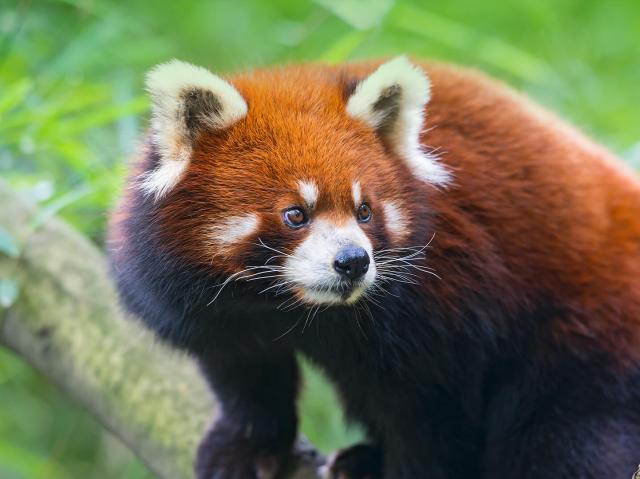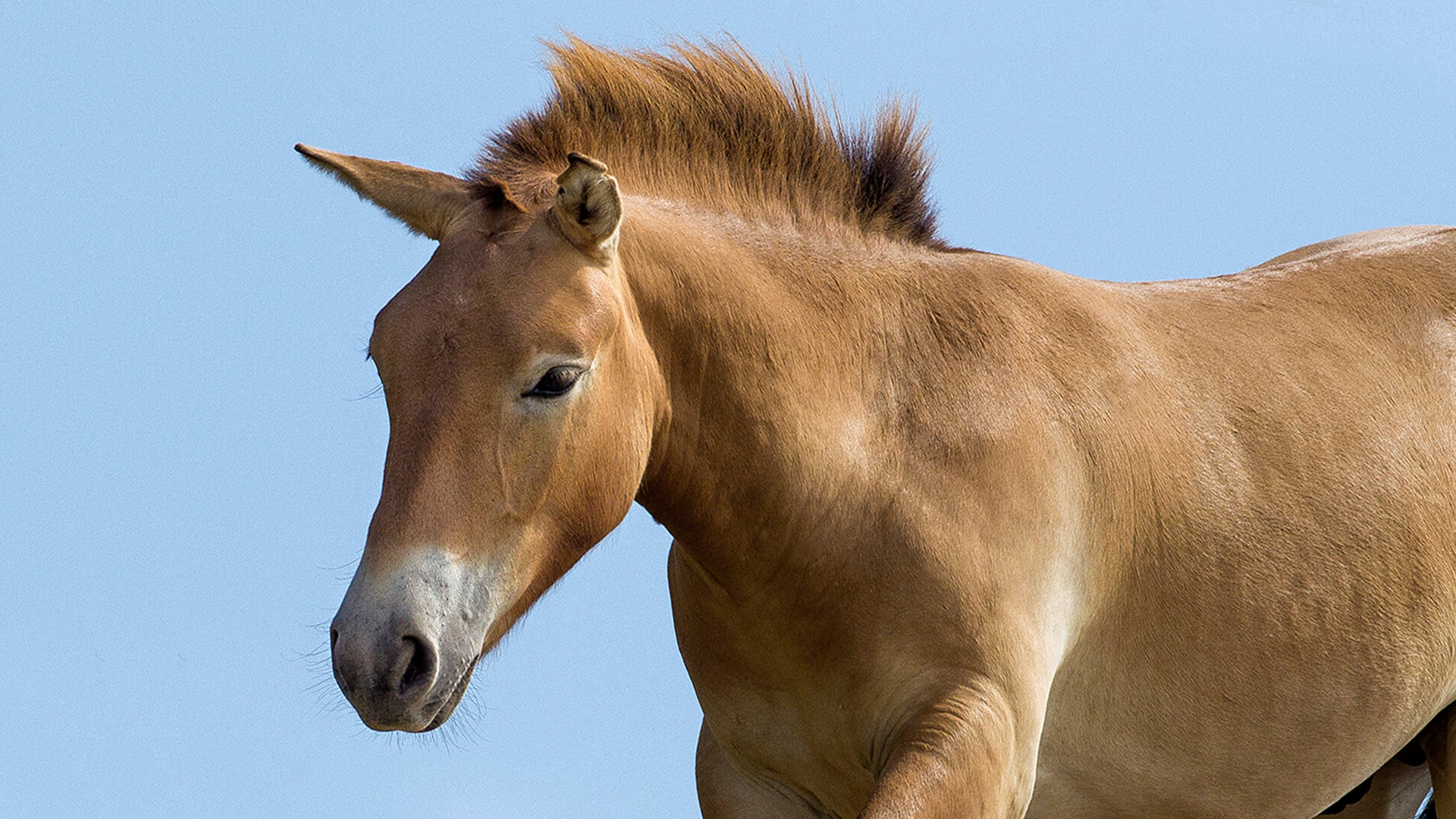
Przewalski's Horse

- CLASS: Mammalia (Mammals)
- ORDER: Perissodactyla
- FAMILY: Equidae
- GENUS: Equus
- SPECIES: ferus
- SUBSPECIES: przewalskii

ABOUT
How do you say Przewalski's horse? It's quite a tongue twister for most Americans! It's pronounced either "sheh-VAHL-skee" or "per-zhuh-VAHL-skee" or even "PREZ-VAHL-skee," depending on the speaker. They're also known as Asiatic wild horses or Mongolian wild horses. Przewalski's horses are the last remaining wild horses and the closest living relative of domestic horses. Like their cousins, zebras and wild asses, all horses belong to the family Equidae.
Przewalski’s horses weren't scientifically described until 1881, when Russian explorer Nikolai Przewalski shared details about this rarely seen horse with scientists at a museum in St. Petersburg. It's clear they've been around a long time, however. Cave paintings 30,000 years old found in Spain and France depict a stocky wild horse with Przewalski's horse features.
Przewalski's horses are stocky, short, and pot-bellied in comparison with other horses, with a spiky mane like a zebra and dark brown legs. Their coats may vary slightly in coloration, but all Przewalski's horses have a light belly and darker back, with a long, dark dorsal stripe from the withers to the base of their tail. Typically, their legs and mane are darker than their body, like a bay horse. Unlike their domestic cousins, though, they don't have a lock of hair on their forehead, called a forelock. Their head is rectangular and large in comparison with the rest of their body, and their ears are darkly rimmed.
HABITAT AND DIET
Przewalski's horses are always on the move through their large home ranges, which can be from 1 to 12 square miles (3 to 32 square kilometers). Bachelor stallions (adult males) cover the most ground, sometimes more than 13 miles (22 kilometers) a day, depending on the time of year. They amble between favored grazing spots and water sources during the day, resting when it gets too warm. In the winter, Mongolian gazelles and red deer may join the horse herd for added protection. Winter is long and hard for the horses, as food is much harder to find.
Przewalski's horses grow thick, warm coats for the winter, complete with long beards and neck hair. These coats are important during the harsh winters in their habitat in Mongolia, Kazakstan, and China, where temperatures can be freezing. In high winds, Przewalski's horses turn their back to the storm and tuck their tail tightly between their back legs. This may be an adaptation to help protect their eyes and nostrils, while also protecting their sensitive reproductive parts, from the severe winds and sandstorms of the Gobi Desert.
Like their equine relatives, Przewalski's horses are grazers and mostly nibble on wild grasses. They graze together and rest together. Their sharp hooves are used to dig holes in the ground, if needed, to find water.
Przewalski's horses at the San Diego Zoo Safari Park graze in their habitat and also eat grass hay.
FAMILY LIFE
It is thought that Przewalski's horses have never been successfully domesticated. They live in two kinds of large, distinct social groups: harem and bachelor groups. Harems rarely have more than 10 mares (adult females) and their offspring of up to 2 or 3 years of age, and are led by one dominant stallion. Harem members all graze and rest together. They spend a lot of time grooming one another, standing side by side, head to tail, and nibbling at one another's back and sides. This helps to reinforce social bonds within the group and provides a good scratch!
When stallions are old enough to compete with the lead stallion, they are driven out of the harem and join small bachelor groups until they are mature enough to successfully compete for a harem group of their own.
When mares are old enough to reproduce, they may leave the harem group to join another. Foals are born after an 11-month gestation period, and they must be up and moving with the herd about 30 minutes after birth. By one week of age, foals are eating grasses and practicing their kicking skills. At one month of age, foals begin to play with other foals and older siblings in the herd. They continue to nurse for eight months to a year, gradually eating more solid foods and becoming more independent. Young horses stay with the group they were born into until they are sexually mature.
Wolves are the Przewalski's horse foal’s greatest natural enemy. To protect their little ones, mares form a defensive circle around their young, and the stallion trots around the circle and charges. At night, one or more horses keep watch for predators while the others rest. Small herds are more vulnerable to attack, as there are fewer adults to protect foals. Some mares leave the protection of the herd to give birth, and this often invites a wolf attack, as the mother does not have the help she needs to protect her foal (baby).
Like other horses, Przewalski’s horses call to each other with neighs and nickers. A snort can mean fear, frustration, or an alarm call, and a grunting “laugh” and sharp squeal are used by stallions during courtship. Stallions create “stud piles” of their feces to mark their territory and harem to other stallions in the area.
CONSERVATION
Przewalski's horses are native to a habitat called the steppe. Until 15,000 years ago, this immense and hardscrabble, sparse grassland habitat stretched from the east coast of Asia to present-day Spain and Portugal. After the last Ice Age, however, the steppe gave way to woods and forests, to which Przewalski's horses weren't well adapted. By the 19th century, the few horses that remained were confined to Mongolia, southern Russia, and Poland.
In the early 20th century, farmers and livestock took over good grazing lands, forcing Przewalski's horses into other areas. Wealthy aristocrats and westerners were fascinated by the unusual horses and collected foals to keep as pets. Przewalski's horses were spotted in Mongolia into the 1980s but became extinct in their native habitat around that same time.
Luckily, a small number of Przewalski's horses were protected and cared for in various zoos around the world. All Przewalski's horses alive today are descendants of 12 wild horses that were protected at the beginning of the 20th century.
In 1977, conservationists established the Foundation for the Preservation and Protection of the Przewalski's Horse, and they developed a Species Survival Plan in 1979 to help save the species. In 1992, 16 horses were reintroduced into their native habitat in Mongolia, in an area that was later designated as Hustai National Park. Conservation breeding and reintroduction efforts continued, and as of 2014, the world's population of Przewalski's horses had reached nearly 2,000, with 178 of them living in the wild. New horses continue to be introduced to the population at three reintroduction sites in Mongolia, and two in China.
Since 1979, San Diego Zoo Wildlife Alliance and a team of international conservation scientists have led the way in conservation breeding, conservation genetics, and reintroduction of Przewalski’s horses. Our conservation scientists, in collaboration with researchers from the University of Pennsylvania, are studying the DNA of this endangered horse to determine genetic relationships in the remaining populations to guide conservation decisions. Information obtained through genome sequencing studies will help guide conservation breeding, maintain genetic diversity, and focus reintroduction efforts for the "last wild horse."
In 2020, our conservation science teams, in collaboration with the nonprofit Revive & Restore, and ViaGen Pets & Equine successfully cloned a Przewalski’s horse—the first in the world. “Kurt” was born to a surrogate domestic quarter horse—and is the clone of a male Przewalski’s stallion whose DNA was cryopreserved in our Wildlife Biodiversity Bank. By restoring genetic diversity, conservationists hope to strengthen today’s population for the long-term sustainability of their species.
By joining San Diego Zoo Wildlife Alliance as an ally for wildlife, you help save species worldwide.
LIFE SPAN
18 years on average
YOUNG
Gestation: About 11 months
Number of young at birth: 1
Weight at birth: About 66 pounds (30 kilograms)
Age of maturity: Females, about 3 years; males, about 5 years
SIZE
Length: 6.9 feet (2.1 meters)
Tail length: 3 feet (90 centimeters)
Height: 4 to 4.6 feet (1.2 to 1.4 meters) tall, at the shoulder
Weight: 550 to 770 pounds (200 to 300 kilograms)
FUN FACTS
Over the years, we’ve cared for more than 150 Przewalski's horses born at the San Diego Zoo and the San Diego Zoo Safari Park.
Unlike domestic horses, Przewalski’s horses shed their mane and tail annually.
According to folk tales, Mongolians consider Przewalski’s horses to be the riding mounts of the gods and therefore call them “takhi,” which means spirit or holy.
Przewalski's horses have 66 chromosomes, while domestic horses carry only 64. The two can breed and produce offspring that have 65 chromosomes.



